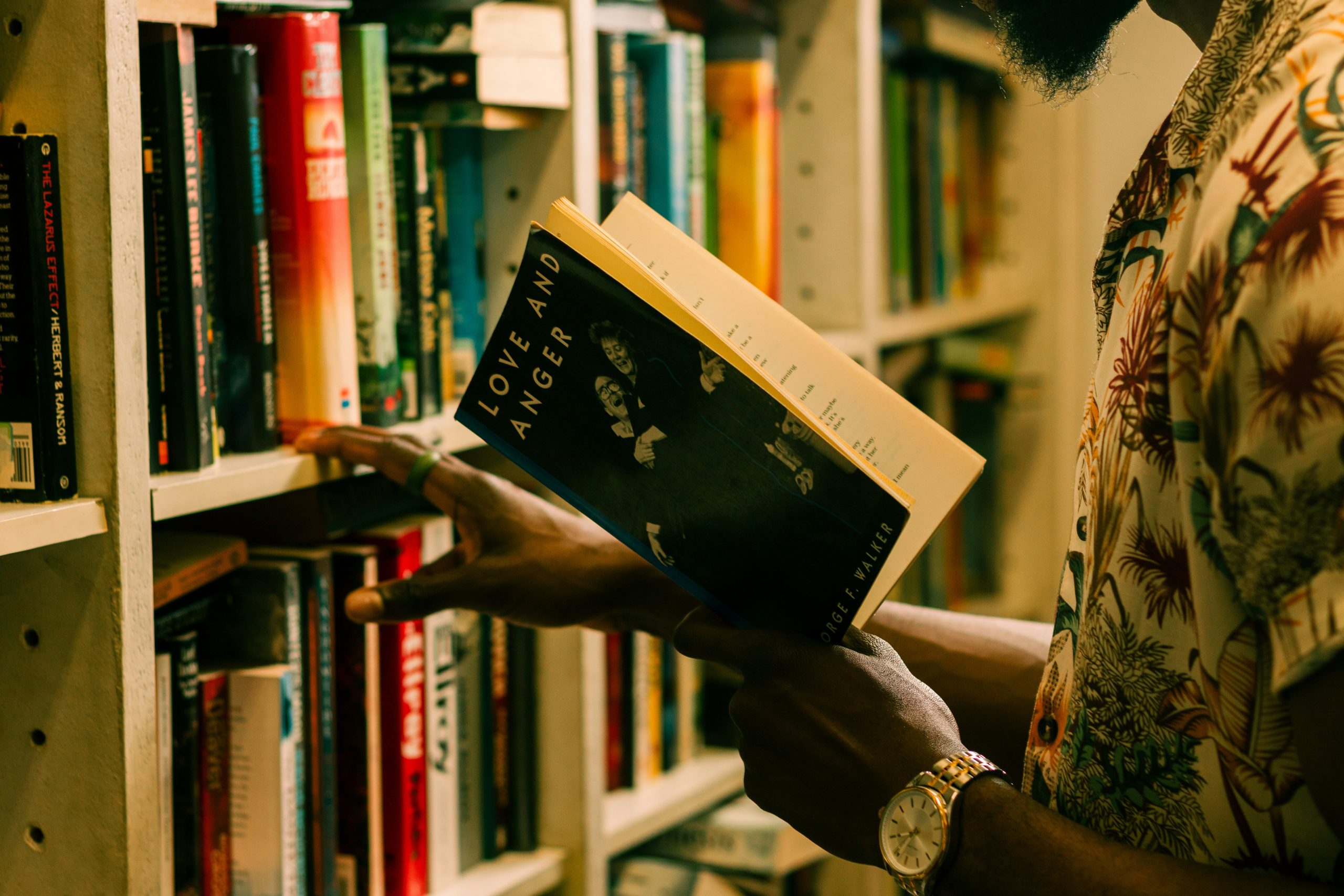interviews
Edwidge Danticat Wants More Haitian Storytellers
The MacArthur genius on how people of color deserve books that explore their full humanity and complexity

I still remember the feeling I had the first time I finished one of Edwidge Danticat’s stories. I’d been assigned to read her short story collection Krik? Krak!, published in 1996, in one of my undergraduate classes at Barnard College (where Edwidge was an alumna) and I had approached the book the way I often did with assigned readings—a mindset of, Okay, I just have to get through this. But by the first page, I was immersed. “Children of the Sea,” the first story in the book, riveted me with its lush language and epistolary form; it was also the first story I had ever read about Haiti, a place whose violent history I’d known very little about. By the end, I was breathless, moved, and never more aware of the power of a well-written story.
I’m not the only person in the world to notice Danticat’s talent, of course (despite what my colleagues in my MFA program might have thought)—Danticat’s stories and books have garnered her many awards and nominations, including the American Book Award for her novel The Farming of Bones (one of my favorites), National Book Award nominations for Krik? Krak! and her nonfiction book Brother, I’m Dying, and a National Book Critics Circle Award for Brother, I’m Dying. Danticat herself received a coveted MacArthur “Genius” Grant. Even without all of this institutional recognition, I know from speaking to friends that she is beloved among writers and readers, particularly among women of color.
Her new book, Everything Inside, is Danticat’s first collection of short stories to be published since Krik? Krak! over twenty years ago. The stories, which center on people of the Haitian diaspora and the various traumas they seek to make sense of, feel particularly timely at this moment as America debates over the value of and moral responsibility we have towards immigrants and their children. The stories are elegant and empathetic, still bearing the hallmark tension between beauty and violence that marked her first collection. And yet they’re less sentimental, more mature, quiet, and steady—the work of someone who has lived through more and has evolved in what she has wanted to say.
I was privileged enough to speak to Edwidge Danticat over the phone, where we discussed the evolution of her short fiction, the relationships between the characters of Everything Inside and the characters in Krik? Krak! and the difficult and differing ways in which immigrants and their children deal with lingering generational effects of painful pasts and the burden of representation.
Karissa Chen: I think this is your first collection of short stories since Krik? Krak!, which you published over two decades ago. I know in between you’ve written a lot of other things—novels, novels-in-stories, a lot of nonfiction. You’ve even written a bunch of children’s books and YA books. I’m curious how it’s changed for you to go back to this form after these years. I mean, I’m sure for some of these stories you’ve probably been working on them for a while behind the scenes. But I’m wondering why you decided to return to this form and if you approach writing short stories in a different way now than you did back then.
Edwidge Danticat: I love short stories. I love to read them and I love to write them. I like the bursts of narrative. I like the economy. When I was writing the stories in Krik? Krak! I was still in college and later working a full time job. I wrote those stories during stolen moments, often before exams, and after hours in the office where I worked. There was an urgency for me about getting those stories down because I was new at writing stories and each story felt like a stroke of lighting, something that might never happen again. I was always afraid that if I didn’t stop whatever I was doing and write those stories down, I would lose them forever. I think that sense of urgency shows in the stories in Krik? Krak! They’re very direct, declarative even, like the kind of stories they’re modeled after, the oral stories that are part of the call and response of Haitian storytelling, which we introduce by saying Krik? (or asking the audience if they’re ready to listen) and having them answer Krak! (or replying yes, they’re ready to listen.)
The stories in Everything Inside, though, are stories that I have been writing for over thirteen years. I have written and rewritten them many times, even after they were published in journals or magazines. These stories have benefited from the patience I now have with both myself and with narrative, the trust I have that some resolution to the problems in the story might lie somewhere ahead, in the future. I am now more willing to wait for my stories to resolve themselves. So it was great to re-enter stories with that kind of patience, to let the stories pause and breathe, and allow the characters to keep revealing themselves to me over the years. I enjoyed going back to the form and writing stories in this unhurried way. The stories in Everything Inside are not just longer but more nuanced because of this, and you feel, I think, that you are also reading about people with a lot more time on their hands, a situation which parallels the case of some first-generation Americans who have a lot more time and leisure to linger on some things and address certain issues than their parents did.
KC: You said some of these pieces you’ve been working on for a long time. What’s the one that you’ve been working on the longest and how long did that take you?
ED: The first story in the book, “Dosas,” is the one I’ve been working on the longest. I added the most recent elements to it last year. It’s based on something that actually happened to a few people I know, where someone they loved and trusted pretended to be kidnapped to get money from them.
I also wanted to write about Certified Nurses Assistants in Miami and later added an element of something my mother said to me while she was in the hospital with terminal cancer. Everyone who was taking care of her was Haitian and she found a lot of comfort in this. So one day she said to me, It’s wonderful that so many of us are here to take care of each other. Behind these words, I was hearing her say, Who would take care of us, if we didn’t have each other? So the combination of these two things—people we love betraying us and potential strangers taking care of us—came together in the many layers of this story.
Different elements kept popping up with this story over the span of thirteen years. A possible new romance for Elsie, the Certified Nurses’ Assistant. Her thoughts on marriage. Then I saw a sign in my gentrifying neighborhood in Miami’s Little Haiti that said “Nothing Inside Is Worth Dying for” and I put that on Elsie’s door and switched it to “Everything Inside Is Worth Dying For”, which gave us the title of the book.
KC: In both your collections, all the stories seem to be in conversation with the others in the book. Krik? Krak! was very much focused on a historical Haiti, with almost a sort of magical realism and focused on the violent past of the island. Whereas I think this collection felt a lot quieter, but still very much focused on the Haitian diaspora in our current times and how they wrestle with their different traumas. There’s echoes between the stories, even though all their situations are different.
I’m wondering—and I hate to do this, because I know it’s probably very annoying for you to have the two collections compared to each other—but because so much time has gone by, do you think that your own interests as a writer have shifted since these two collections?. I’m wondering where you are as a writer now that led you to write these particular stories.
ED: I don’t mind the two books being compared because the characters in Everything Inside could be the children or the grandchildren of the ones in Krik? Krak!. Krik? Krak! is about several generations of one family. The characters in Everything Inside are not related to each other or to them, and they are certainly of another generation, but they feel connected in my mind.
If we want to be really meta, we might say that some of the characters in Everything Inside may have read Krik? Krak! and said “This reminds me of my mother or grandmother.” I meet a lot of young Haitian-Americans who say that to me about Krik? Krak!, by the way. So there’s definitely a strong connection between the two books, the most important being the ancestral town in Haiti from which both groups originate: Ville Rose.
This is what’s wonderful about having a collection. When you’re writing individual stories, they feel singular. When you put them together, a thread emerges not only between the stories, but also between your past and possibly future work. But, as I mentioned earlier, I don’t think I would have been able to write the stories in Everything Inside twenty-five years ago. Watching the shift in focus and perspective between the different generations of my family has helped a lot in shaping these stories. Watching my parents die and the next generation grow up and become adults—American adults—has really guided these stories.
KC: I think that’s really apparent in the way you frame a lot of these stories. “Sunrise, Sunset” literally had that shift in perspective going back and forth between the two generations, showing the contrast in how they’ve had to deal with motherhood. But so many of the stories are recursive—where something happens and the characters go back to see how they got to this point in time. They’re revisiting their own histories, but vis-a-vis their family, etc.
ED: “Sunrise, Sunset” is a good example of that gap between generations where there’s this missing link of knowledge on both sides. The mother believes that her daughter should be grateful for all the sacrifices that have been made so that the daughter can have the life she now has, and the daughter thinks the mother is unable to understand all that she’s going through because her mother’s experiences are from a time and place that is unfamiliar to the daughter. If only they could talk, they would realize just how similar their experiences are. Yet, there’s something heavy about trauma-related migration that makes silence comforting for both of them until the silence becomes so stifling it’s dangerous. The friction comes to a boiling point when a new generation comes into the picture, the grandson. The story fills in that gap and you realize that if one could hear what the other was thinking, things would be a lot better.
KC: One of the other things I noticed about the stories in this collection is that the “big thing” that happens almost always happens off stage. So, in “In the Old Days,” the father has already died, in “Seven Stories,” Callie’s father has already been killed, and the earthquake happened off stage in “The Gift,” even though we get to see it a little bit. Even in “Without Inspection,” although we are in the moment of his death, like with the other stories, it feels like the traumatic thing isn’t the point of drama. Maybe this is because it’s something that’s out of the characters’ control. So instead, what you end up focusing on is how they make sense of this thing that has happened and their personal histories and the memories that lead up to it and what happens beyond that moment. It’s interesting because I feel like this is not how people often think about writing. People think, Oh, we got to lead up to the point of drama. So I’m curious what it is about this aftermath that interests you, because I think there actually is a lot of tension in the aftermath.
I was always afraid that if I didn’t stop whatever I was doing and write those stories down, I would lose them forever.
ED: For the stories in Everything Inside, the aftermath feels much bigger than any singular event because the “big thing” is one in a series of events—historical, cultural, familial, personal—that are affecting these characters. What concerned me most was not just one triggering event but how the characters were trying to regroup after a series of events, some of which go back several generations. If you were to meet any of the characters in this book on the street and you said, tell me something about yourself, this is what these particular people would say. That’s how I see the contents of the stories. Plus there’s always in immigration and migration this feeling where obviously you’ve come to a new place to have a different future, but you have no choice but to keep looking back because you’ve left everything you’ve ever known behind. So you’re moving forward, but always looking back at the same time.
KC: That’s something that personally interests me as well—when you are someone who is a migrant, someone who is either refugee or an immigrant, and the different ways of dealing with things. Some people just forge forward and they’re like, This is all I can do is, all I can do is move forward. And some people are like, I have to keep making sense of what has happened to me. Obviously many people do both. I think that tension is something that is really palpable through these pieces even with the children. In “Hot Air Balloons,” Lucy has this roommate who goes to Haiti and does all this relief work, and Lucy is like, I can’t, that’s not a thing that I’m trying to, and she’s sort of inherited this conflict.
ED: Whenever I asked my parents about their lives in Haiti during the Duvalier dictatorship and what it was like to live in Haiti in the ‘50s and ‘60s, for example, all they would say is some version of “We’re here now.” This was meant to explain everything. Like if things weren’t difficult then we wouldn’t be here now, so let’s move on. I think having to leave was painful for them in a way that they never wanted to detail or even describe. They had also grown up being discreet. Living under a dictatorship you couldn’t say too much because you didn’t know what people were going to do with that information, how it might be used against you. You didn’t know who to trust. So my parents were very tight-lipped about what their lives had been like. They’d moved on in some ways but were still tied to the past, as are some of the characters in the book.
Many younger people, like Lucy in “Hot Air Balloons,” are very protective of the image of Haiti, even if they’ve never been there. So many awful things have been said about Haiti that we want to highlight its beauty. So Lucy wants to go to Haiti but not with a relief or aid group. She wants to go on vacation there. She also wants to protect this image that her parents have created for her of the beautiful beaches and cool mountains which paradoxically co-exists with her parents’ conflicting desire for her not to go there so she doesn’t come face to face with some of the things that drove them away.
KC: I think when you’re the descendent of immigrants in America, there’s that burden, right? You feel that burden to be like, I want to be able to personally acknowledge the failings of wherever my parents came from; obviously they came here for a reason. But I also want everyone here who doesn’t understand that place that I’m from to not have a negative image of it. I want them to think this place I’m from is a great place.
The more stories we have, the more storytellers we highlight, the more nuance and complex our views of a place and its people can be.
ED: Exactly. I think fiction can get at some of that nuance. There has to be some balance. It’s not all terrible and it’s not all pretty either. There’s no place or person like that. We deserve to have our full humanity and the complexity of our lives fully explored. This is why it’s important to have more Haitian novels translated and have more Haitian diaspora voices out there. The more stories we have, the more storytellers we highlight, the more nuance and complex our views of a place and its people can be.
KC: It actually makes me wonder about another one of your stories, “Seven Stories,” because that one is about an unnamed island. It’s interesting because you write from the point of view of this woman, Kim, who’s Haitian, but she is an outsider to this island and she first hears about this island through her friend Callie. And what she knows is how Callie’s father was killed, but at the same time, Callie is telling her, My island is great in all these ways. Then Kim gets there and it has turmoil, it has its own xenophobia, but it’s also beautiful and has a very well maintained facade. It actually feels very familiar despite being an unnamed island. Why did you set this story in this unnamed place and then have this woman who’s on the outside be the one to take us into it and into Callie’s story?
ED: That story was originally a novella, which would mimic one of those narratives where people go to a place for a few days and feel they understand it and write a long expert type article about it, something which happens a lot with Haiti. I decided to make the person who does this kind of writing Haitian-American because I could easily be asked to write a story like that about another Caribbean island and find myself facing the same issues Kim Boyer does. Writing as an insider/outsider feels very familiar to me as someone who writes about Haiti while living outside of Haiti so I wanted to complicate that whole thing in some way. I also had this experience when I was in my teens of having some famous Haitian exiles move across the hall from me in Brooklyn in the 1980s and later seeing them in Haiti after they’d become politicians. It just so happens though that on this particular island in “Seven Stories” they don’t like Haitians at all, but would make an exception for Kim because she’s Haitian-American. Among many other things, Kim realizes, while trying to write about the complexity of the place, that she travels differently through the world and gets a very different reaction than other Haitians who are coming to that very same place for a better life.
KC: I’m going to ask you one more question. Is there a story in this collection that either was the most difficult or one that you’re proudest of? And would you be willing to share which one that is and why?
We deserve to have our full humanity and the complexity of our lives fully explored.
ED The story I’m proudest of is “Without Inspection.” It’s the most recent of the stories and it’s a story that I’ve been trying to write for a really long time. When I first moved from New York to Miami about seventeen years ago a lot of people were coming to Miami by boat from Haiti, the Bahamas, and Cuba. I wanted to write about someone who’d made this journey but ended up falling in a construction accident, something which was also sadly happening a lot a that time. And still happens now and then these days. Last year I went to an immigration forum and I learned the term “Entry Without Inspection”, which means entering this country without seeing an immigration official, which means, on paper, you’re not technically here at all. I wanted to integrate all of those elements into one story and it took a while to figure out how to do it. I wanted to incorporate a historical and mythological element about flight as well. I also wanted to include something of the quick moment after a person dies where some loved ones who are nowhere near them experience this feeling that you can’t quite explain, whether it’s a flash of something, a shiver, a flutter, or something else. Balancing all of that with the reality of Arnold, the main character’s fall, meant a lot of research, down to how many seconds it would take to fall from a certain height. So I’m really proud of how that came out, and that’s probably why I close the book with that story.
The hardest story to write though was “Seven Stories.” I was really enjoying the company of these characters and I didn’t want the story to end. Cutting it down to a third of its original length was hard for me. I killed a lot of my darlings, but I really wanted to keep that sense of the beauty, as well as the complexity of the place.
KC: Yeah. It’s really beautiful. The island feels really real—it was so real that I actually thought, Did I miss the name? I actually flipped back several pages to double check. It seemed so real I was sure you’d been there before.
ED: I borrowed different aspects of many islands, including Haiti, to make up that place. One thing I’ve found just in talking to people about the book is that if you want to be asked about something a lot, just don’t give it a name. [laughs] People really want to know if the place is real or not. All I can say is that it’s very real to me.
KC: And I liked the song that Arnold mentions, [“Latibonit O”]! I appreciated that in the final note, you give the whole translation. Because you have it without the translation in the story and the reader still gets the effect. And then, when the reader moves to the end note and reads the lyrics, it adds something extra.
ED: You should go and listen to it online. A wonderful singer and family friend named Leyla McCalla sings a very beautiful version of it. This book ended up having a lot of singing. That’s one of the things I realized after the stories came together. It had a lot of music, from Nina Simone’s rendition of “Take Me to The Water’, to Charles Mingus’ “Haitian Fight Song” to “Latibonit O” then the hymn “Shall We Gather at the River?”









